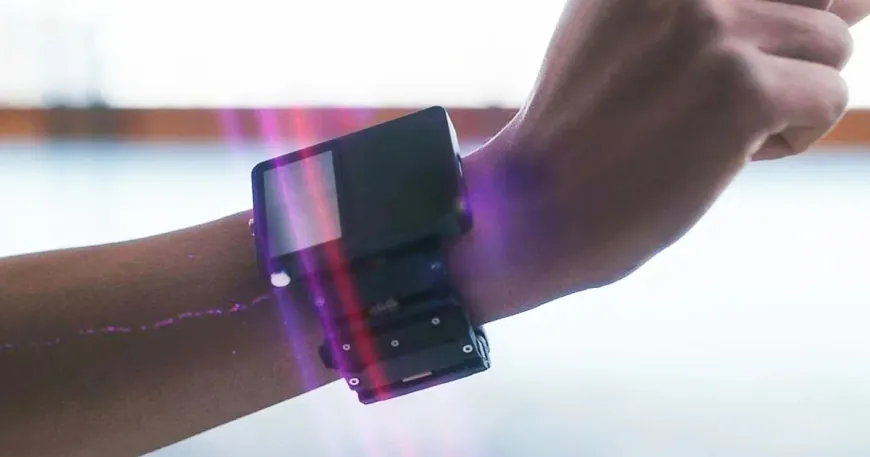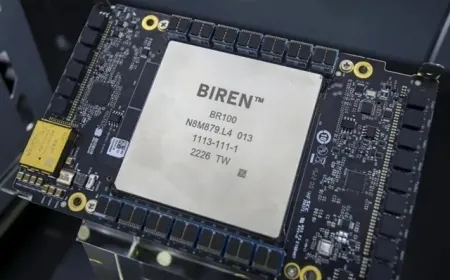Meta Is Developing a Wristband That Lets You Control a Computer with Hand Gestures
Meta's new wearable translates muscle signals into digital commands, letting users control a computer by just thinking of a movement.

Meta researchers, in collaboration with Carnegie Mellon University, are working on a prototype wearable that may one day let users control a computer simply by intending to move. The device looks like a fitness tracker, but it’s powered by a complex technology called surface electromyography (sEMG), which picks up minute electrical signals from the user’s muscles.
These signals are strong enough to interpret hand movements—even if no visible movement actually occurs. The system is being developed specifically for people with spinal cord injuries or motor impairments who cannot operate standard devices. In early tests, the device enabled users to open apps, move cursors, and even type messages in mid-air by mimicking writing gestures with their hand or wrist.
Detecting Intent Without Physical Movement
What makes Meta’s project notable is its ability to register intention, not just motion. The sEMG sensors sit along the forearm and pick up nerve signals that travel from the brain to the hand—even if the hand itself doesn’t respond. This approach allows the wristband to decode user intent in real time, turning those signals into digital commands.
“This isn't about just reading movements—it’s about understanding what a user wants to do before the movement happens,” said Douglas Weber, a professor of biomedical engineering at Carnegie Mellon, who is advising on the project. For individuals with complete hand paralysis, that distinction is crucial. Their muscles still generate tiny electrical signals when they attempt to move, and Meta’s wristband can isolate and interpret them.
Early Clinical Trials Are Underway
Meta has begun pilot trials with volunteers who have spinal cord injuries. The research team is focused on determining how reliably the device can translate muscle signals into specific actions, such as clicking, scrolling, or text input. According to a study recently published in Nature, the wristband required only a short training period before participants could perform basic computing tasks.
In one test, a participant who could not physically write was still able to “write” a sentence in the air, and the wristband translated it into on-screen text. In another, users successfully navigated interfaces using only finger twitches detected through the device’s sensors.
The trials are still in early stages, but Meta researchers say the technology shows strong potential for assistive computing—and could eventually have wider applications.
A Simpler, Safer Alternative to Brain Implants
Unlike Elon Musk’s Neuralink, which involves surgically implanting electrodes into the brain, Meta’s device works entirely from the surface of the skin. It doesn’t carry the risks associated with invasive neural interfaces, such as infection, rejection, or long-term unknown effects.
Headsets that rely on electroencephalography (EEG) to read brain waves are non-invasive but lack precision due to signal noise and low resolution. By contrast, the sEMG approach captures signals closer to the muscles, allowing for more precise and responsive input. In practice, this means Meta’s wristband can detect an intended action and carry it out on-screen in milliseconds—without needing to physically press a button or touch a screen.
Built for Accessibility First
Although the technology could one day be used in consumer devices for gaming, virtual reality, or hands-free computing, Meta is focusing first on disability support. The immediate goal is to provide a reliable tool for people with motor impairments, such as ALS or spinal cord injuries, to access digital environments without needing adaptive hardware or external caregivers.
“We’re not building this to replace the keyboard or mouse right away,” said a Meta engineer familiar with the project. “We’re trying to build a bridge between the human nervous system and modern devices—starting with the people who need it most.”
While commercialization is still a long way off, Meta’s research adds to a growing push in the tech world toward more intuitive, accessible human-computer interfaces. And unlike many moonshot projects in the space, this one may not require brain surgery to become practical.
Key Features Expected in Meta’s Gesture-Control Wristband
- Muscle Signal Detection via sEMG:
Detects electrical activity from forearm muscles to interpret intended hand movements, even without visible motion. - Gesture-Based Control Without Physical Contact:
Enables users to interact with computers using invisible finger movements like swipes, taps, and air-writing. - Built for Accessibility:
Designed for individuals with spinal cord injuries or motor impairments, allowing computer use despite paralysis. - Non-Invasive Wearable:
Functions externally like a wristband—no surgery or implants required, unlike neural interface alternatives. - Real-Time Precision Over EEG:
Offers higher signal fidelity and faster feedback than traditional EEG headsets used for brain-computer interfaces. - Fast Training With Interactive Games:
Adapts quickly to users through short training sessions and responsive calibration tasks. - Research Collaboration With Carnegie Mellon:
Developed in partnership with CMU to ensure real-world usability for patients with mobility impairments. - Broader Future Use Cases:
Could extend to applications in gaming, augmented reality, or consumer tech with gesture-based interfaces.
Also Read: U.S. Cybersecurity Officials Warn: Hackers Are Stealing Passwords from TeleMessage Users
































































